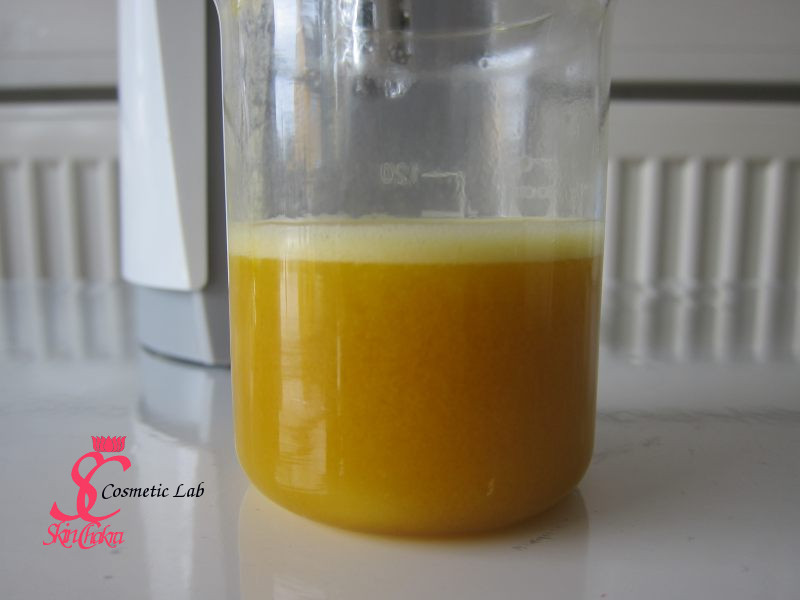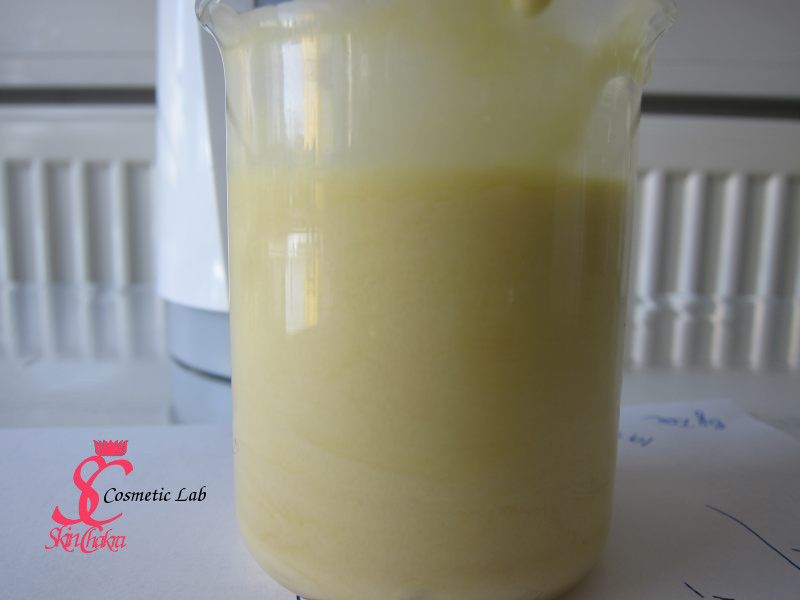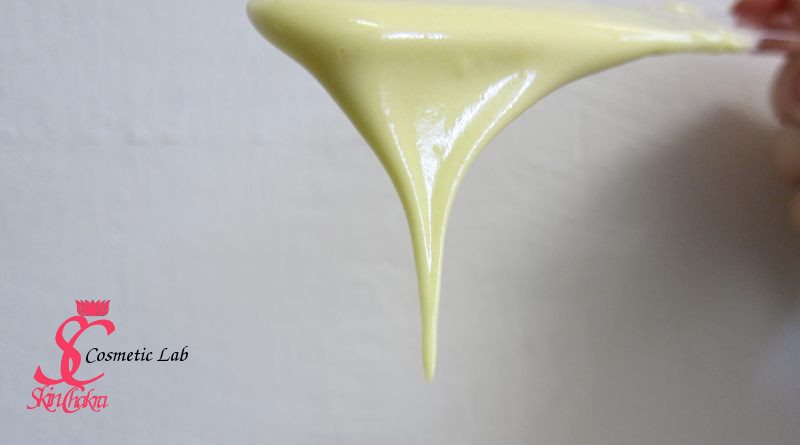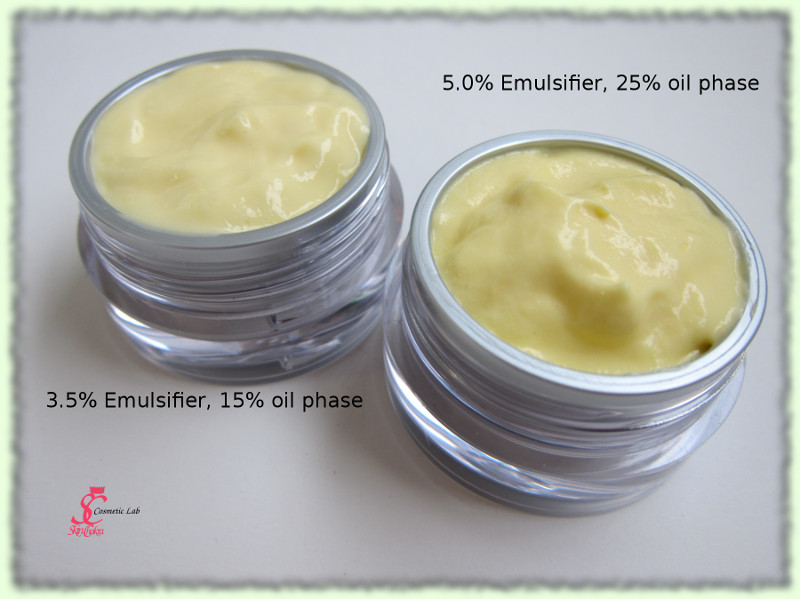I hope you've enjoyed my last post about Plantasens® HE20 .
I've had some amazing contributions and wonderful feed backs on Facebook.
To show you how the oil and emulsifier content can change the consistency of the emulsion, I've prepared two samples. This is a very basic formulation (like most of my formulations) and I've applied wheat germ oil. I really love this oil but I've always applied it as a functional oil and at low concentrations (<5%). The oil is a little bit heavy and sticky on the skin and I had always some considerations that it would make a heavy and sticky cream if applied at high concentrations. After making a couple of emulsions with wheat germ oil as the main oil compenent, all my worries disappeard. It makes nice and smooth emulsions with no stickiness or greasiness. The emulsions vanishes into skin with a very nice refatting. Even no soapiness with Plantasens® HE20.
Anyway, I prepared two creams with exactly the same formulation except for the oil phase ratio. The one with the higher oil content has obviously a more intensive colour because of the higher content of wheat germ oil.
I added the emulsifier to the water phase. It creates emulsions with a slightly higher viscosity compared with adding the emulsifier to the oil phase but the long term stability is better when adding the emulsifier to the oil phase.
Here are my basic recipes:
Phase A:
De-ionized water to 25.0%
Plantasens® HE20 3.5% (5.0% for the second sample)
Coco-glucoside, glyceryl oleate 2.0%
Phase B:
Wheat germ oil 14.0% (24.0% for the second one)
Dermosoft® GMCY 0.3%
Tocopherol 0.5%
Organic rosemary CO2 extract 0.1%
Phase C:
Organic Neroli hydrosol to 100%
Dermofeel® PA-3 0.1%
Sodium lactate 2.0%
Phase D:
Xanthan gum 0.5%
Glycerine (99.5%) 4.0%
Phase E:
Euxyl K 903 0.9%
Ylang-Ylang essential oil 0.3%
Lactic acid or Sodium hydroxide to adjust the pH
Instruction:
1- Heat ingredients of phase A in a water bath @ 65-70 C
2- In a another beaker, heat ingredients in phase B to the same temperature
3- Stir Phase A with a whisk or a spatula, as the emulsifier melts it blends with water to a shiny white paste
4- When the emulsifier is melted and blended with water, stop heating, remove the beakers from the water bath and slowly add the oil phase to the water phase. Meanwhile stir the water phase.
A pre-emulsion with a very intensive colour is made at this stage.

5- As you homogenize the pre-emulsion, the intensive colour becomes milder and a smooth emulsion forms.

6- Continue stirring this blend and add phase C to it.
7- In a small beaker blend xanthan and glycerine. Add this mixture to the emulsion (you have to stir fast to avoid building any lumps)
8- Add the preservative and the essential oil and adjust the pH between 5.0-5.5 (if you're using another prepservative, adjust the pH according to your preservative demands)

This is the consistency of the emulsion. Take your microkit sample (for microbiological test) and fill the emulsions in suitable containers.
As you can observe in the comparison photo, the emulsion with the higher oil content has slightly a higher viscosity and thicker consistency. Both of them are however very light on skin. My dry skin (face) really enjoyed it during this cold and dry winter (meteorogically we already have spring).
Thank you for being here and for sending me your comments and photos. I really enjoy your participation in our Facebook discussions.
Be Happy and have fun





